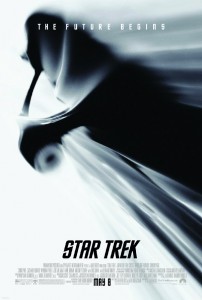 Obviously, you are aware of this movie, and you’ve probably already formed your own opinion. And anyway, I’d be leery of spoilers for anyone who hasn’t seen it. In theory, this constrains my review by quite a lot, but I figure it leaves me free to talk about what I really wanted to anyway. But, first things first. Did I like it? Enough to see it three times on opening weekend. Did it have flaws? I can think of a couple offhand, one extremely nitpicky and one that, absent, would have failed to feel like a Star Trek movie anyway. Plus, I think I’m willing to claim that at one point, there was actually an insufficient amount of technobabble. Was it accessible to non-fans? I feel as though it really was, and the reviews I’ve heard from non-fans (and in one case, an actively anti-fan) have borne this impression out. So you should really go see it, if this has not already occurred.
Obviously, you are aware of this movie, and you’ve probably already formed your own opinion. And anyway, I’d be leery of spoilers for anyone who hasn’t seen it. In theory, this constrains my review by quite a lot, but I figure it leaves me free to talk about what I really wanted to anyway. But, first things first. Did I like it? Enough to see it three times on opening weekend. Did it have flaws? I can think of a couple offhand, one extremely nitpicky and one that, absent, would have failed to feel like a Star Trek movie anyway. Plus, I think I’m willing to claim that at one point, there was actually an insufficient amount of technobabble. Was it accessible to non-fans? I feel as though it really was, and the reviews I’ve heard from non-fans (and in one case, an actively anti-fan) have borne this impression out. So you should really go see it, if this has not already occurred.
Because what J.J. Abrams made here was a philosophical, character-driven action movie, and really, how many of those do you think exist? Of the ones that exist, how many do you think aren’t insufferably smug about it? This right here is a narrow field to occupy! Action: ’cause, you know, space battles and laser gun fights. Character-driven: the driving forces of the story are all based in interactions. Kirk and McCoy’s friendship. Kirk and Spock’s rivalry. Spock’s relationship with his human mother. Nero’s irrational impulse for personal rather than systemic revenge. (He’s the bad guy.) Philosophical: take a group of people that shook the foundations of the Federation (and, projecting outward less than you’d think, the galaxy) and drastically change their history. Okay, many of the changes were not drastic, but one was, and there are clear, subtle ripples from there even before the main plot of the movie takes over. And then explore the question of random chance versus unalterable destiny.
I liked that by the end of the movie, the history of the Federation is vastly divergent from the one that fans of five TV series and ten movies know. And I like that it’s not going to be “fixed.” It was a bold move that I think is going to pay off in spades for the future of the franchise. But as much as I approve of that, I absolutely adored watching as, moment by moment, destiny pushed beloved characters into roles that they had fallen into by seeming happenstance in the original timeline. This new Trek may have surprisingly non-causal time travel that never really existed in “my father’s” Star Trek, but it also has some modicum of fate. And that’s kind of cool.
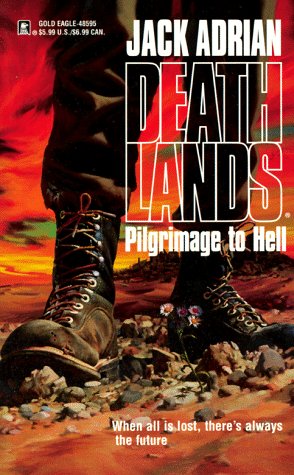 Over the past year or more, I have become more and more intrigued by a pair of series by a mythical author, James Axler, that I keep seeing on the shelves at Half-Price Books. The problem is, they run back several years, and of course the first one is never available. Right? Right? Wrong, as it happens! Not only did I find the first one, I found the first one of the older series. Unlikely, and yet I am standing here before you today to swear it is all true. The odds of finding the other first book, or this second book… but still, one takes what one can get.
Over the past year or more, I have become more and more intrigued by a pair of series by a mythical author, James Axler, that I keep seeing on the shelves at Half-Price Books. The problem is, they run back several years, and of course the first one is never available. Right? Right? Wrong, as it happens! Not only did I find the first one, I found the first one of the older series. Unlikely, and yet I am standing here before you today to swear it is all true. The odds of finding the other first book, or this second book… but still, one takes what one can get.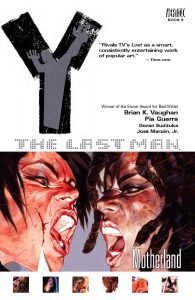 If memory serves, the most recent volume of Y: The Last Man ended on a bit of a cliffhanger, in which… well, okay, I guess I can assume you may not have read
If memory serves, the most recent volume of Y: The Last Man ended on a bit of a cliffhanger, in which… well, okay, I guess I can assume you may not have read  So there I am, sitting at the bar, nursing the water between my third and fourth beers, occasionally snaking a fry from Ryan, sure because they taste good but mostly for the thrill of the hunt, when suddenly the girl next to me says, “Hey, babe. Is this guy boring you? Why not come with me, I’m going to see a movie about robots who could conceivably go to another planet!” Which is why I never had my fourth beer.
So there I am, sitting at the bar, nursing the water between my third and fourth beers, occasionally snaking a fry from Ryan, sure because they taste good but mostly for the thrill of the hunt, when suddenly the girl next to me says, “Hey, babe. Is this guy boring you? Why not come with me, I’m going to see a movie about robots who could conceivably go to another planet!” Which is why I never had my fourth beer.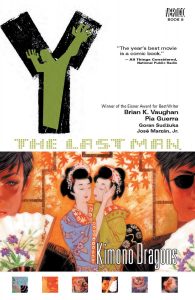 For the first time in a really long span, I’ve broken the rotation of my graphic novels reading. It’s very much not my fault, though. See, the current Walking Dead book was supposed to have been out in January, and then April, and now in a few days. But “in a few days” pushes well beyond the time I was supposed to read another one, you see. So I had to skip ahead to the nearly concluded Y series. Well, okay, not very near, since I’ve got two books to go after this one, and one of those doesn’t release until June. But it feels pretty near, right now.
For the first time in a really long span, I’ve broken the rotation of my graphic novels reading. It’s very much not my fault, though. See, the current Walking Dead book was supposed to have been out in January, and then April, and now in a few days. But “in a few days” pushes well beyond the time I was supposed to read another one, you see. So I had to skip ahead to the nearly concluded Y series. Well, okay, not very near, since I’ve got two books to go after this one, and one of those doesn’t release until June. But it feels pretty near, right now.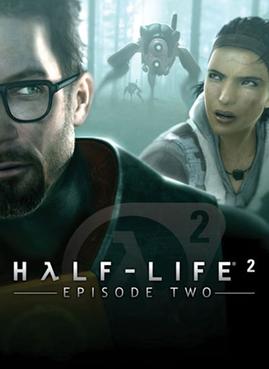 Most of my video game time[1] lately has been spent perusing
Most of my video game time[1] lately has been spent perusing